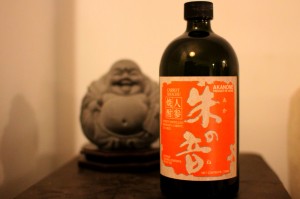Nishi Yoshida Shuzo
95% of Nishi Yoshida's production is barley shochu. They also make small runs of some niche products such as chestnut and carrot, but barley predominates. In the past they made sweet potato and rice shochu, but switched to barley in the 1980s, distilling for their own labels and for other shochu makers. Their production facility is also substantially smaller than Kitaya, producing approximately 1,200 kilo-liters per year.

